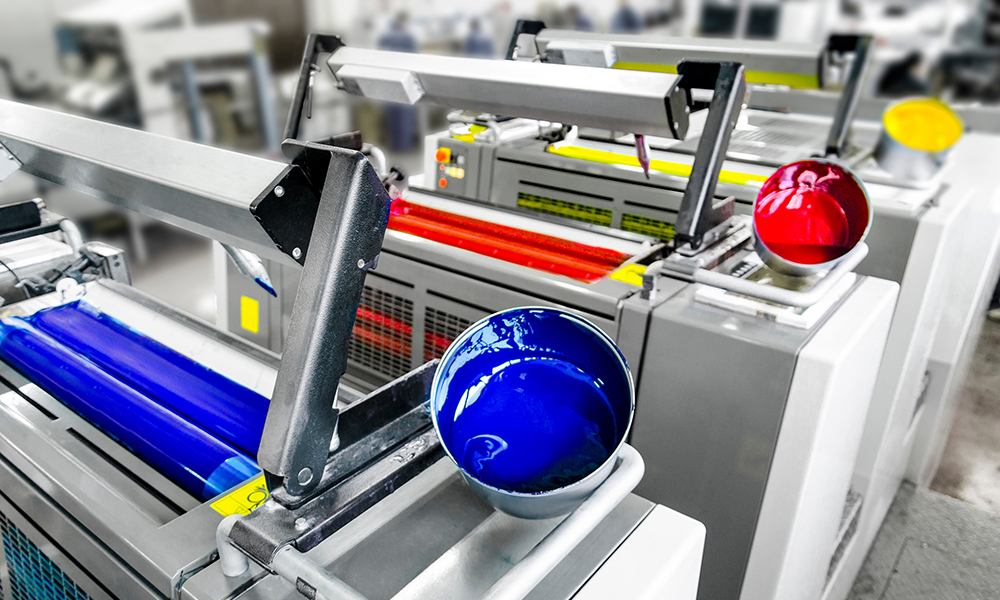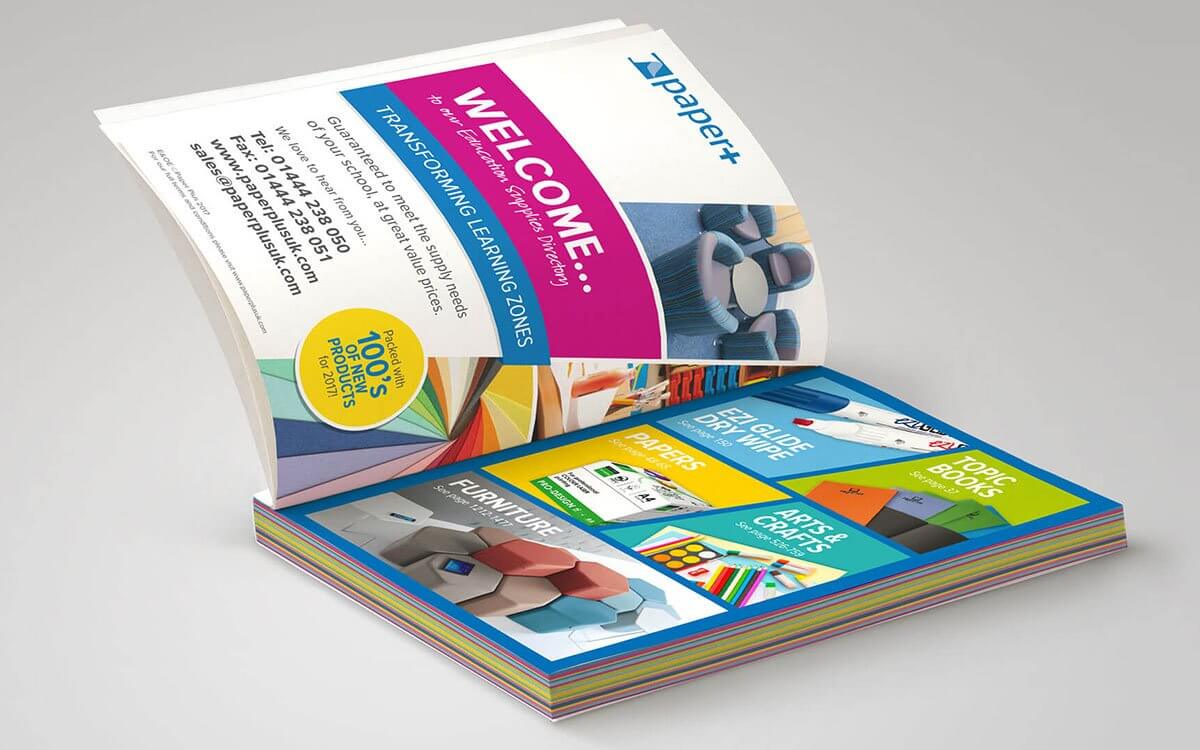The Crucial Guide to Comprehending Litho Printing and Its Applications
Litho printing stands as a significant technique in the printing sector, rooted in the principles of oil and water repulsion. This technique not just supplies top quality photos but likewise accommodates various business needs. Its applications range from advertising products to packaging, showcasing its flexibility. As the market adapts to brand-new modern technologies, the evolution of litho printing increases inquiries regarding its future and importance in an electronic landscape. What exists in advance for this sustaining approach?

What Is Litho Printing?
Litho printing, a widely used printing technique, relies on the principle of oil and water repulsion. This method uses a level printing surface area, normally a steel plate, which is treated to ensure that the image areas are responsive to oil-based inks while the non-image locations repel them. The procedure begins with the creation of an image on home plate, usually via illustration or photographic means. Once the photo is prepared, the plate is dampened with water, followed by the application of ink. The ink sticks just to the picture areas, permitting accurate reproduction of graphics and message. Litho printing is preferred for its capability to produce top quality prints with great information and dynamic colors. It is generally utilized in business applications, including newspapers, publications, and packaging, showcasing its versatility and performance in satisfying the demands of modern-day printing.
The Background of Lithography
Lithography is a modern printing staple, its beginnings trace back to the late 18th century when German playwright Alois Senefelder designed the method in 1796. Established as a method for duplicating texts and photos, lithography utilized a level stone surface to develop prints with a chemical procedure. Senefelder's advancement enabled better flexibility and imaginative expression compared to previous printing methods.By the 19th century, lithography got widespread acceptance, coming to be a popular option amongst artists and authors. It made it possible for the automation of images, maps, and posters, notably affecting the printing sector. The technique additionally evolved with the introduction of lithographic presses, improving performance and quality.As the industrial revolution advanced, lithography adjusted to fulfill the needs of industrial printing, leading the method for contemporary applications. Today, it remains an important technique in numerous industries, consisting of publishing, packaging, and art recreation.
Just How Litho Printing Functions
A crucial function of litho printing is its reliance on the principle of oil and water repulsion - litho printing. In this procedure, photos are transferred from a flat surface area, typically a metal or polymer plate, to paper. The plate is dealt with to make sure that the areas meant for printing bring in ink, while the non-image areas repel it because of their affinity for water. The printing starts by wetting the plate with water, which sticks to the non-image areas. Consequently, an oil-based ink is used, sticking only to the intended image areas.When home plate enters into contact with the substrate, the ink is transferred, producing a print. The litho printing procedure is capable of generating top notch pictures with great detail. It is usually utilized for automation as a result of its performance and uniformity, making it a preferred technique for business printing applications
Advantages of Litho Printing
One remarkable benefit of litho printing is its capability to produce high-grade photos consistently, making it an optimal option for industrial projects. This printing approach utilizes a flat printing plate, making certain also ink circulation and sharp information. Litho printing is also renowned for its shade accuracy, allowing vivid and true-to-life reproductions, which is crucial for branding materials.Moreover, it sustains a large selection of substratums, consisting of paper, cardboard, and even certain plastics, improving its convenience. The process is affordable for large runs, as economic situations of range lower per-unit expenses. Additionally, litho printing has a quick turnaround time, permitting effective production schedules.Its resilience likewise suggests that published materials resist fading, ensuring that click to find out more the end product preserves its aesthetic allure with time. Overall, these benefits make litho publishing a favored selection across various industries, adding to its long-lasting popularity.
Applications of Litho Printing in Organization
As companies significantly look for reliable and high-quality printing services, litho printing arises as a vital player in various applications. This strategy is specifically favored for producing advertising materials such as pamphlets, flyers, and brochures, many thanks to its capability to provide vivid shades and sharp photos. On top of that, litho printing is regularly employed for product packaging solutions, permitting firms to produce eye-catching tags and boxes that improve product appeal.In the market of business identity, litho printing contributes in generating specialist stationery, organization cards, and marketing product, which aid strengthen brand acknowledgment. Moreover, it is widely utilized in the publishing market for printed materials such as books and publications, where consistent high quality is paramount. In general, litho printing's flexibility and efficiency make it a crucial tool for organizations intending to communicate efficiently and develop a solid market existence.
Artistic Use Litho Printing
Litho printing works as a versatile tool in the domain name of printmaking, offering artists an unique approach to share their creativity. This technique permits for a variety of artistic applications, from traditional prints to modern analyses. By discovering the subtleties of litho printing, artists can harness its distinctive qualities to improve their job.

Printmaking Techniques Introduction
The artistry of printmaking incorporates a diverse series of techniques, with litho printing sticking out for its unique technique to photo creation. This technique counts on the principle of oil and water repulsion, enabling musicians to attract directly onto a limestone or steel plate with an oily tool. Once prepared, the plate is dampened and tattooed, moving the image onto paper with stress. Litho printing is commemorated for its capacity to produce fine details and abundant tonal variants, making it a popular choice among artists. Furthermore, the procedure is functional, suiting both traditional methods and contemporary adjustments. This flexibility permits litho printing to bridge numerous blog imaginative styles, enriching the printmaking landscape with its distinctive qualities and abilities.
Special Artistic Applications
Checking out the one-of-a-kind artistic applications of litho printing exposes its impressive versatility in various creative fields. Musicians make use of litho printing to develop detailed layouts and appearances, permitting meaningful and in-depth jobs. The process helps with the reproduction of vibrant colors, making it perfect for illustrations and great art prints. Many contemporary artists embrace lithography for its ability to incorporate typical methods with modern principles, causing ingenious artwork. Additionally, litho printing is often used in the manufacturing of restricted edition prints, enhancing their worth and allure. The responsive top quality of litho prints includes a distinctive dimension, attracting enthusiasts and art lovers alike. In general, litho printing remains a substantial medium for artistic expression, connecting classic approaches with contemporary creativity.
The Future of Litho Printing in a Digital Globe
As the printing industry advances, litho printing encounters the obstacle of integrating digital modern technologies to remain pertinent. Techniques concentrated on digital integration, together with trends in sustainability and advancement, will form its future - litho printing. Comprehending these dynamics is essential for sector stakeholders seeking to adapt to a rapidly transforming landscape
Digital Assimilation Strategies
An expanding variety of litho printing business are welcoming digital combination approaches to stay affordable in a significantly digital landscape. By integrating electronic workflows, these business can simplify processes and improve performance. This integration enables real-time information management and enhanced interaction in between departments, reducing turn-around times considerably. Furthermore, electronic devices enable better personalization and customization of published products, accommodating particular client needs. Firms are additionally adopting hybrid printing services that integrate standard litho strategies with electronic modern technologies, offering versatility in production. Leveraging information analytics assists in understanding market trends and consumer choices, permitting organizations to make enlightened choices. On the whole, electronic assimilation is coming to be crucial for litho printing firms intending to innovate and react to developing market needs.
Sustainability and Innovation Trends

Frequently Asked Inquiries
What Materials Are Commonly Made Use Of in Litho Printing?
The products typically made use of in litho printing include aluminum plates, ink, water, and paper. Each part plays an important function in the printing procedure, ensuring top notch image reproduction and efficient transfer of ink onto the substratum.
Just How Does Litho Printing Compare to Digital Printing?
Litho printing offers exceptional shade uniformity and top quality for large runs, while digital printing stands out in short runs and modification. Each method has distinctive advantages, satisfying different demands based on production range and cost-efficiency.
What Is the Regular Turn-around Time for Litho Printing Projects?
The regular turnaround time for litho printing jobs differs, typically varying from a few days to a number of weeks. Factors influencing this duration include job visit this page intricacy, quantity, and required finishing processes, impacting overall production timetables.
Can Litho Printing Accommodate Customized Sizes and Formats?
Litho printing can without a doubt accommodate custom-made dimensions and formats, permitting versatility in design. This adaptability enables clients to achieve one-of-a-kind print end results customized to their certain requirements, improving the total effectiveness of their projects.
What Are the Ecological Influences of Litho Printing?
The ecological effects of litho printing include resource intake, chemical usage, and waste generation. Developments in lasting methods and environment-friendly products are progressively lowering these adverse results, advertising an extra ecologically responsible strategy to printing.